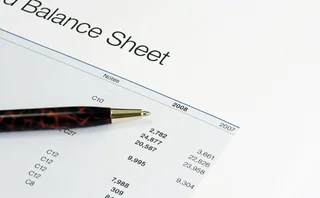
LME updates plastics contracts
The London Metals Exchange (LME) has altered its plastics derivatives contracts so their terms are more like those of non-ferrous metals contracts listed on the exchange, such as aluminium.
However, the results from a study the LME carried out in conjunction with an external agency concluded the deterioration was insignificant and would not affect the value of the plastics in the warehouses.
“The change to warrants will increase their ability to be used by industry participants as liquid collateral for asset-based loans and inventory financing, and to support trade finance and long-term project financing activities,” said Martin Abbott, chief executive of the exchange.
However, Abbott expects the use of warrants for financing will become more popular once the global stockpile of plastics increases. Supply of plastics in the LME warehouses has dwindled over the past year due to increased global demand for the commodity. Opening stock of plastics in the LME warehouses on May 28, 2008 was 1,881 tonnes, compared with 11,459 tonnes on May 29, 2007. When there is a surplus of supply, plastics producers can raise lower-cost financing for business projects compared with normal bank loans by using warrants to sell products that will be delivered at a forward date.
In another change, organisations other than producers and own-brand distributors can now list LME-approved brands of plastics. These LME-approved brands of plastics can then be delivered against an LME contract. The LME has increased its warehouse arrival requirement from four months to 12 months from production. These changes were created in conjunction with feedback from market participants.
The changes affect the eight plastics futures contracts, global and regional, the LME offers for polypropylene and linear low density polyethylene. The first of these were launched in May 2005.
“These changes bring plastics in line with the contracts of the LME’s most successful and liquid products, such as copper and aluminium futures,” added Abbott.
Total plastics trading volumes for April this year is 476 trades, compared with 1,736 in April 2007. The LME is an anonymous trading system and so the firm cannot measure the amount of end-users versus speculators trading the contracts. Abbott said derivatives traded at such low volumes do not typically attract speculators, such as hedge funds, but he also drew attention to the fact that plastics futures are only a few years into their development as an asset class.
“I expect the growth in usage of LME plastics futures will be from the plastics industry, which would use them for risk management reasons,” said Abbott.
See also: Step up to the bar
The metals bubble
Only users who have a paid subscription or are part of a corporate subscription are able to print or copy content.
To access these options, along with all other subscription benefits, please contact info@risk.net or view our subscription options here: http://subscriptions.risk.net/subscribe
You are currently unable to print this content. Please contact info@risk.net to find out more.
You are currently unable to copy this content. Please contact info@risk.net to find out more.
Copyright Infopro Digital Limited. All rights reserved.
As outlined in our terms and conditions, https://www.infopro-digital.com/terms-and-conditions/subscriptions/ (point 2.4), printing is limited to a single copy.
If you would like to purchase additional rights please email info@risk.net
Copyright Infopro Digital Limited. All rights reserved.
You may share this content using our article tools. As outlined in our terms and conditions, https://www.infopro-digital.com/terms-and-conditions/subscriptions/ (clause 2.4), an Authorised User may only make one copy of the materials for their own personal use. You must also comply with the restrictions in clause 2.5.
If you would like to purchase additional rights please email info@risk.net
More on Exchanges
Nasdaq leads push to reform options regulatory fee
Proposed rule change would pare costs for traders, raise them for banks and defund smaller venues
Asia’s ETF assets on the rise – HKEX presents the results of Asia ETF survey 2019
Asia’s total ETF assets surged by 23.9% in the first half of 2019 thanks to an increasing adoption of ETFs into investment portfolios. According to a survey conducted by Hong Kong Exchanges and Clearing (HKEX), asset expansion in Asia’s ETF market is set…
NYSE Offers Exchange-Calculated Bitcoin Index, with More to Come
NYXBT will initially be based off data from Coinbase Exchange.
Deutsche Börse to set up Europe's first multi-asset RMB platform
German exchange group signs joint venture deal with CFFEX and Shanghai Stock Exchange
Exchange Revenue Figures Rise, Fall; Data Revenues Continue Steady Increase
A mostly positive mix of Q1 results also yield big increases in data revenues for some exchanges.
Lift-off for ASX Aussie dollar swap clearing business
Volumes jump following revamp of Sydney bourse's clearing incentive scheme
Exchange Data Revenues Make Positive Start to 2015
Acquisitions made up for some shortfalls in exchange revenues







